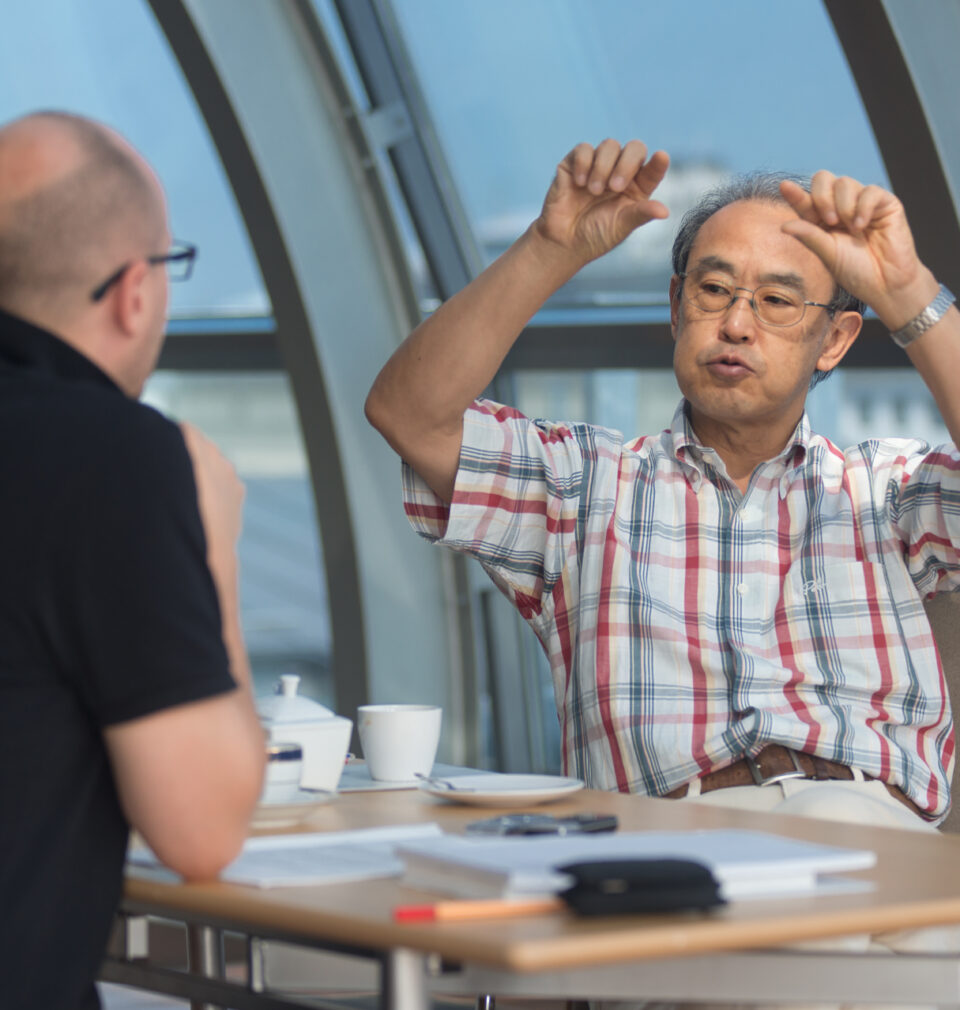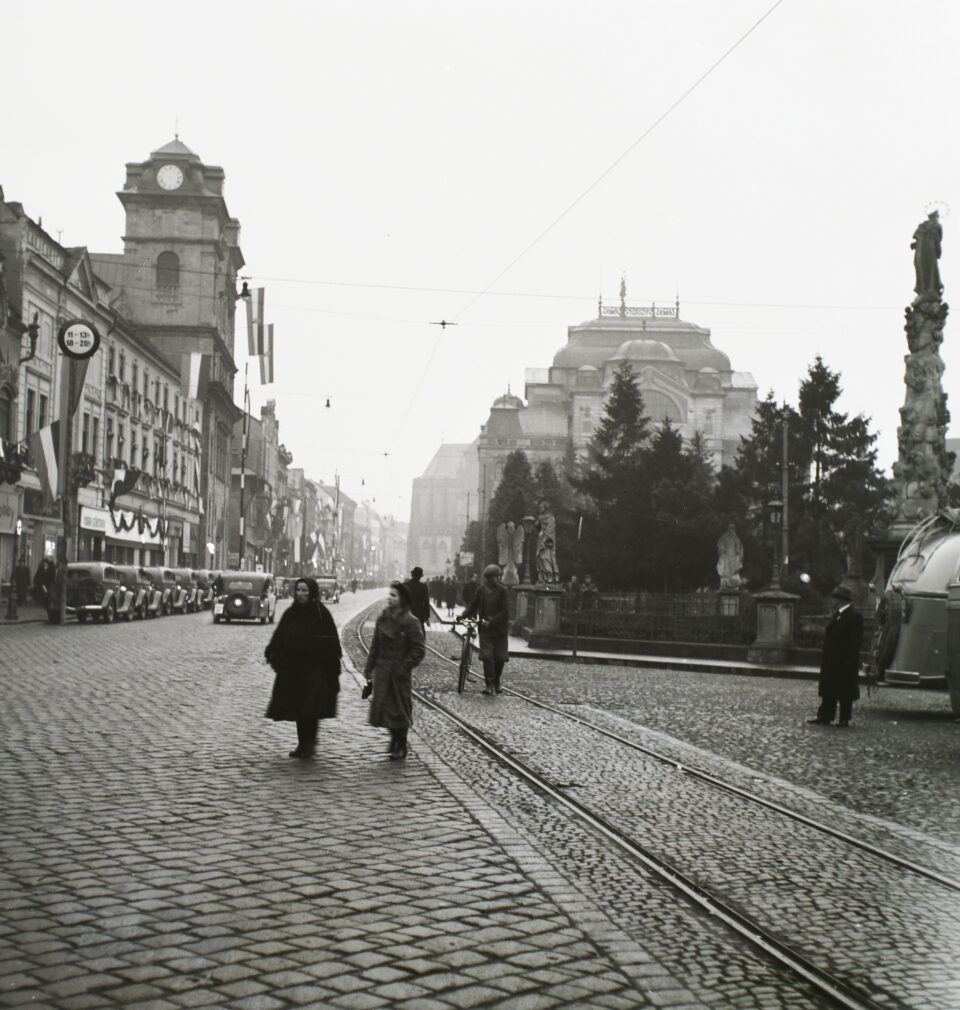
The Elusive Centre (of Europe)
Europe Is Shrinking
Publication: 14 October 2021
TAGS FOR THE ARTICLE
TO THE LIST OF ARTICLESAsia does not exist – said Professor Tokimasa Sekiguchi provocatively a few years ago, arguing that such a term is superfluous and using it is harmful, as it oversimplifies, trivialises and deforms our view of the world, and hence makes it impossible for us to penetrate the actual topographies of diverse cultures and civilisations, to discover them in an unbiased way, free of prejudice or prior expectations. It creates an inevitable and, what is even worse, an imperceptible distortion of our perspective on the world. Responding to this provocation, we decided to ask Professor Sekiguchi how our continent, and especially Central Europe, looks from a Japanese point of view.
Łukasz Galusek: I was astonished to read in one of your texts that the most popular dairy product in Japan is a Bulgarian yoghurt and that it is not true that the Japanese love Chopin. So I am curious about what the Japanese think about Central Europe, if such notions exist at all.
Tokimasa Sekiguchi: I don’t particularly follow or study this theme, so what I say here will be just a loose reflection, a subjective observation. The term “Central Europe” does exist in Japanese, but its intensity, so to speak, is not strong, and it co-exists with the term Eastern Europe.
Ł.G.: Understood politically or geographically?
T.S.: Before the Second World War in Japan you did not speak at all about countries of Eastern Europe. And later this description referred, above all, to the different political system, and such an understanding became predominant in the successive 50 years. I call it the metonymisation of geographic terms: West or East in the political sense. But recently this identification is gradually disappearing and Polish people should be happy about it. I have a sense that it is fortunately becoming a historical term, just like “avant-garde” – meaning the 20th-century artistic movements – “Modernism”, “Young Poland” or “Positivism”.
In the living language, Eastern Europe is fading and vanishing. Instead you more and more often hear about Central Europe. No longer in the political sense. I also perceive in it a natural need to vindicate this region. No longer “on the edge”, “on the peripheries”, but “in the centre”. In the way the Swiss are saying they are the “centre”, the “navel” of Europe. The Germans too. It is a universal desire.
Ł.G.: When a Japanese person hears “Central Europe”, what countries do they associate it with?
T.S.: More and more often they do what you, Central Europeans, would wish them to; that is they associate Central Europe with Poland, Slovakia, the Czech Republic, Hungary and Austria. It is, of course, influenced by tourist guides using this term, but it has to be admitted that increasingly often it also appears as a cultural or literary category. But I confess that I don’t predict a long life for this term. Why? There is an omnipresent other pressure, an other force which is causing Europe to shrink – as a conceptual area.
It’s probably the unification of Europe which has produced the tendency to perceive its civilisation as a whole. It does not favour noticing the inner diversity of this part of the world or simply the European Union, which in a way undermines the viability of such terms as Central Europe.
Ł.G.: The “shrinking” of Europe is also probably occurring under pressure from new global powers – in cultural and economic terms – such as China and India. It enforces a change in thinking.
T.S.: Exactly. Europe occupies less and less pages in the coursebook of knowledge about the world. At the same time there is a growing number of such university courses such as European Studies. National classifications, Polish Studies, German Studies and so on, are disappearing. Studying one language is probably a model which, so to speak, has already fulfilled its role. (And the fact that Japanese universities are cutting down on such courses as German Studies or Polish Studies probably is not caused only by the crisis).
Ł.G.: Polish Studies can today be a specialisation within European Studies rather than a separate course subject?
T.S.: Interestingly, such an approach is related to post-colonialism. In the 19th century, when the classification of sciences was done by Europeans and then copied in the colonies, humanities – European Studies had not been invented then – had their “great power” hierarchy: English Studies, French Studies, German Studies, then a bit of Russian Studies and Slavonic Studies just as a linguistic specialisation, which was a bit on the sidelines. But the colonies gradually emancipated themselves and this hierarchy lost its validity. It suddenly turned out that Italian became “fashionable” in Japan; was it a side effect of the fashion for Italian cuisine? But seriously speaking, the French and German languages don’t play a primary role in the world today.
Ł.G.: What can we say about Polish Studies, Bohemian Studies or Hungarian Studies? Even from the European perspective, not to mention the global one, we call ourselves small nations, small cultures, small languages.
T.S.: The paradox is that this revaluation is both a threat and an opportunity. We only have to change our view. We must stop looking at nations and cultures in such a way that the entire context, closer and more remote neighbours, disappear from view. Instead of thinking “everything for Poland”, as Żeromski would put it, we should treat knowing the Polish language and Polish culture as one of the instruments for understanding European culture and civilisation, of which Poland is part. And without an intimate knowledge of Polish history and Polish language we are unable to understand the history of Europe itself. This is what Norman Davies, Daniel Beauvois and Timothy Snyder advocate … I am glad that such a change of thinking can already be observed, and probably not just in Japan.
Ł.G.: You belong to the generation of scholars who from interest in a “larger” culture progressed to a “smaller” one, so to speak. You finished French Studies. It was the same with Norman Davies – from Russian Studies or an interest in Russia he turned to something smaller, that is Polish Studies, but there is no doubt that the Polish perspective also allowed him to understand Russia more fully. What is also important, you are both incomers who discovered this once isolated fragment of Europe, then called Eastern Europe. The political status preceded geography, so when you found yourself in Poland in the 1970s you joked that you had arrived from the West, that is, from the Far East.
T.S.: Norman Davies and I belong to the generation which wanted to know what was happening behind the Iron Curtain; everything was a mystery, a secret. It was curiosity that brought us here, we were discovering something we had no idea about, in my case for example, Gombrowicz and Schulz. Twenty years ago, when Polish Studies were launched in Japan, Poland was present every day on the front pages of newspapers – Wałęsa, Solidarity – in an atmosphere of general excitement, which generated an interest in your country, and many students came to us on this wave of enthusiasm … to learn the language of Wałęsa!
Ł.G.: Does that mean Poland is also becoming a historical term and that the Japanese do not mean contemporary Poland when they think about our country – that they mean Wałęsa and the present personified by him, which has instantly become history…?
T.S.: Poland has an assured place in the history schoolbooks but it needs a new “brand”. I have been recently asking myself the following question: why Poland, with its 38 million people, a well educated population, fertile soil and a large area, is not creating well-known brands, products, banks, and world-wide corporations? The much less numerous Fins have Nokia, the Swedes have Volvo, the Nobel Prize. I began thinking about the brands an average Japanese person associates with a given country: Belgium – beers and Godiva chocolate (a global chocolate brand), Holland – Heineken. Poland does not offer a similar product or company, although Poles are working almost everywhere – in corporations, as excellent engineers and academics. Perhaps the old tradition of thinking of the Polish nobility – the contempt for merchants, trade, money, the city – decided to let the Jews or Germans deal with that. A Polish nobleman is his own master in his own beautiful country house, and dabbles with culture. It is a syndrome with which Prus is preoccupied in The Doll, with which Wokulski is desperately struggling. I still notice this. It is true that art – the desire to reach artistic heights – has been close to the Polish heart since Romanticism, and your achievements are difficult to deny but you have no such affection for industry and trade – is this not a legacy of the outlook characteristic of the nobility?
Ł.G.: This is despite the fact that we are living in cities. The manor is still close to our hearts and an office or workshop remain alien, as if Romanticism was still winning over Biedermeier.
T.S.: I can point to a certain similarity of character between the Japanese and the Germans – a crazy preoccupation with details, from start to finish: the imperative to finish the job, to achieve perfection in some ability, a craft, a kind of worship for work and great respect for a true craftsman. But I do not see such features in the Polish tradition. This finds a reflection in the lack of precision but also, in more general terms, in a certain distrust of industry, production, trade, banks, institutions – in a word, of the bourgeoisie and its ethos. Interestingly, the Japanese Samurai and the Polish nobility have a lot in common. Although originally they were knights, the Samurai gradually took a liking for the countryside, where they built country houses and peasants worked for their fortunes. Formally, the highest social class was always the aristocracy headed by the Mikado family, but after the 12th century the Samurai became the ruling class, and like the Polish nobility they constituted about ten per cent of the population. But there are also differences – the Japanese city dwellers prospered very well. It is worth remembering that it was not owing to the Samurai but to merchant families that Osaka thrived in the 17th and 18th centuries, and it was there that the first official stock exchange in the world called the Dōjima was established, and futures were traded there. What is associated today with the success of Osaka in business and production, is a legacy, among other things, of the teachings of a thinker of peasant origin, Ishida Baigan (1685-1744), and his school (Sekimon Shingaku). He taught that trade or merchantry, the essence of which is mediation in the exchange of goods, is not an inferior profession. Ishida’s philosophy has a lot in common with Calvinism as far as a merchant-bourgeoisie ethos is concerned. Of course, Max Weber’s theory and his The Protestant Ethic and the Spirit of Capitalism comes to mind. (But in this context I particularly recommend the books by Robert Neelly Bellah). The creative contribution of the Samurai to Japanese culture and literature is not as impressive as that of the bourgeoisie and monks. In Polish culture, the nobleman is dominant – he is the best educated, he is the sponsor, the inspirer and the protagonist of the works he often creates himself – and the clergy holds second place. In Japanese culture there are many more burghers and peasants who wrote or painted.
Ł.G.: Let us go back to Central Europe, since Poland is so desperately “entangled in history”. Can the Visegrad Group be some alternative – four European countries, which successfully went through the first stage of transition – in short, four success stories?
T.S.: From the Japanese perspective, the term “Central Europe” and even less the “Visegrad Group” will never acquire such a force as, for example, “Scandinavia”. A handy word, with a long pedigree, which makes it more authentic. It speaks to us, even if we cannot immediately list what is exactly hiding behind it – what products, lifestyle, culture … And yet the term contains something striking, generating associations with the North. And “Central Europe”, a two-part term, generates suspicion, especially the adjective “central”, as one can sense an inferiority complex here. The will to be located “in the middle” rather then on the peripheries can be negatively perceived as a symptom of an inferiority complex. This stems from the political legacy, from the suspicion that “Central Europe” was invented to replace “Eastern Europe” but this description still hides certain divisions, which may have a negative impact. And this why I am not sure whether this term is necessary, despite all the common features possessed by the states and nations from the region. It would be better to find a different belonging – if an alternative exists.
Copyright © Herito 2020




